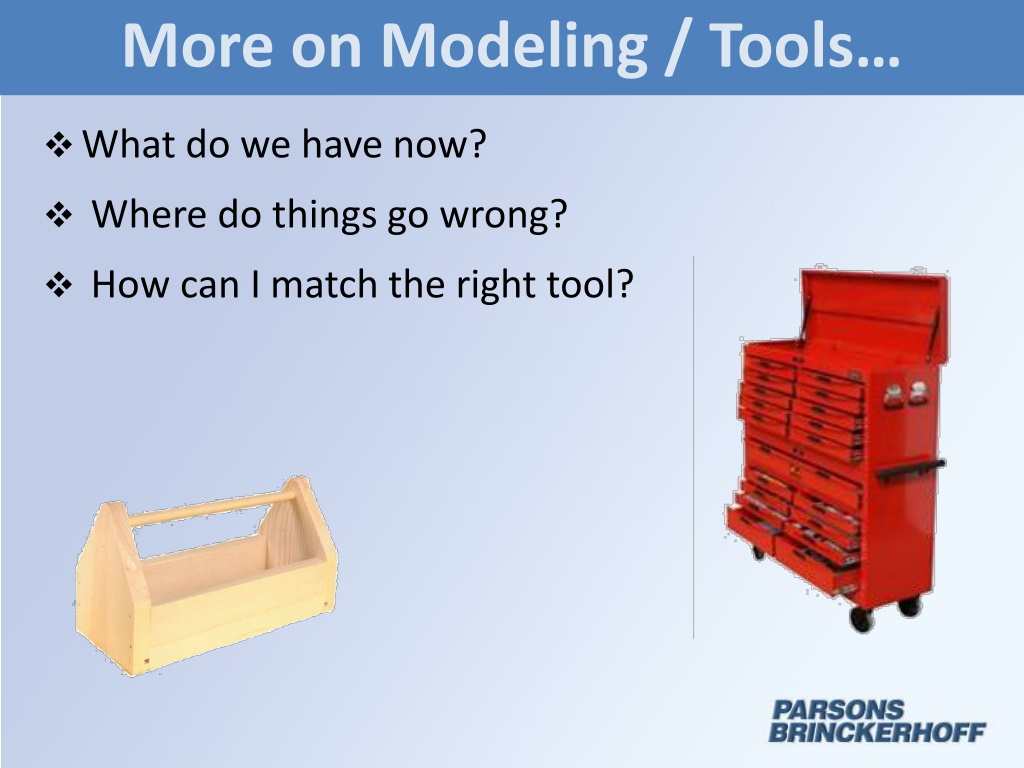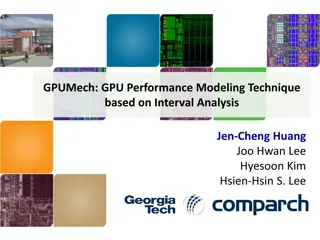Navigating the Landscape of Modeling Tools for Effective Analysis
Exploring the current array of modeling tools for analysis, this information-rich content delves into what options are available, where potential pitfalls may arise, and strategies for selecting the right tool based on specific needs and contexts. Survey results highlight the diverse range of software tools and analysis types, providing insights on their strengths and limitations as revealed by industry experts. Emphasizing the importance of leveraging tools in conjunction with natural abilities and curiosity, the content underscores the capacity for innovative development beyond traditional expectations.
Uploaded on Sep 26, 2024 | 0 Views
Download Presentation

Please find below an Image/Link to download the presentation.
The content on the website is provided AS IS for your information and personal use only. It may not be sold, licensed, or shared on other websites without obtaining consent from the author. Download presentation by click this link. If you encounter any issues during the download, it is possible that the publisher has removed the file from their server.
E N D
Presentation Transcript
More on Modeling / Tools What do we have now? Where do things go wrong? How can I match the right tool?
If you give people tools, and they use their natural abilities and their curiosity, they will develop things in ways that will surprise you very much beyond what you might have expected. Bill Gates
What Do We Have Now? Division of Planning sent survey to multiple consultants with variety of software experience Multiple analysis types and software tools listed Rankings B - Best (if you have time and money) G - Good fit O - Ok if it has be quick & cheap U Use is not recommended NE No Experience
What Do We Have Now? Tools Included in Survey: Transyt-7f Highway Capacity Software Vistro Synchro Microsimulation Travel Demand Models VISSIM TransCAD TransModeler VISUM CORSIM / TSIS Cube Sketchplan / Spreadsheets
What Do We Have Now? Analyses Included in Survey: Signal Timing / Coordination Turning Movement Analysis Weave Analysis Intersection or interchanges alternatives Queue, LOS, and Delay Analysis Tolling, HOV, Congestion Pricing, etc Alternative Routes or Diversion Volumes
What Do We Have Now? Survey Results
What Do We Have Now? Survey Results No one tool does it all Microsimulation requires help to do signal timing / coordination In some instances, HCS can do a lot of the work as a microsimulation Macro level models are fine for diversion, new routes, and possible tolling CORSIM is an honest microsimulation tool Sketchplans / Spreadsheets are quick and cheap but give general answers Vistro is highly rated, but not widely used
What Do We Have Now? Even with a panel of experts , there is some difference of opinion This can lead to: Correct applications Wrong applications Gray areas Limitations Cost and Time extensions
Where Do Things Go Wrong? Early Communication Communication failures are common (at all levels) Have discussions early (pre-scoping) to identify what they are (Hint: it may not include modeling) Include Design, Planning and / or Traffic Engineering staff depending on the intended application May require one or more depending on length of project May require both Central Office and District Staff
Where Do Things Go Wrong? Communication Scoping At the scoping meeting, discuss what is needed for this project (and beyond) don t short-change the project When modeling is on the table, invite the subject matter experts Be sure to discuss: Schedule Expected Effort Desired Outcomes (short term / long term) Data needs to meet goals If necessary, have a follow-up scoping meeting / call solely on traffic forecasting / modeling / analysis
How Can I Match the Right Tool? The toolbox is wide open: How do you decide? How much budget is available? Don t waste it but don t shortchange it. Is the schedule tight? Proper data collection can take a while. Some models can take months to build. Does one size fit all? Can you overthink it?
How Can I Match the Right Tool? Quick Examples: I-265 Programming Study Macro data for a micro analysis Multiple tools Different expectations I-65 to Hodgenville Planning Study Initial traffic forecast requested before scoping meeting with consultant Study area scenarios changes at scoping meeting no updates made to request

























